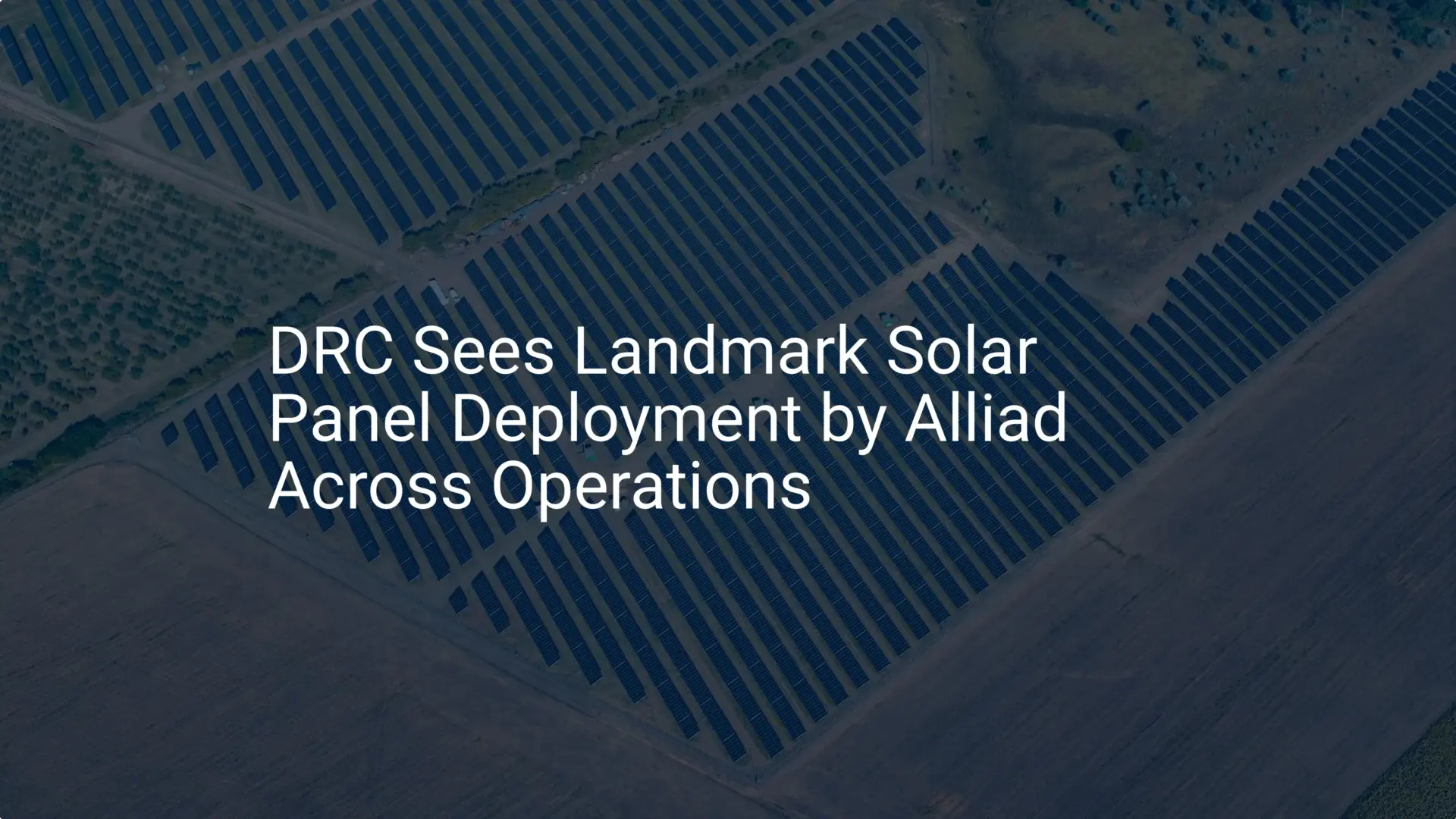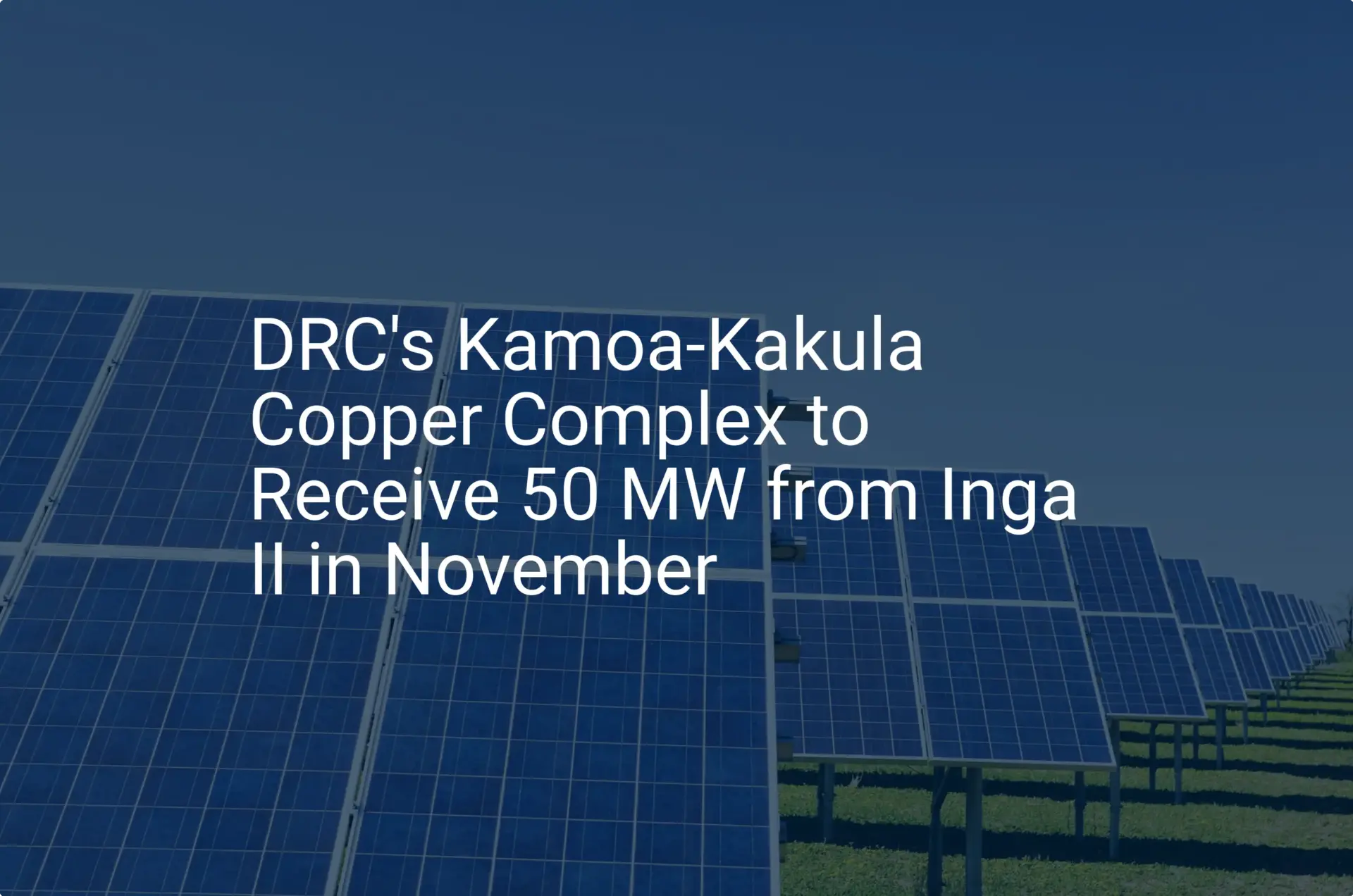Gain comprehensive insights into the statistics and metrics surrounding the solar production industry in Democratic Republic of the Congo
- Climate to travel (n.d). Climate in Kinshasa (Democratic Republic Congo). Retrieved November 30, 2024, from https://www.climatestotravel.com/climate/democratic-republic-congo/kinshasa
- Democratic Republic of Congo Africa IRENA (31st july 2024). Energy Profile. Retrieved December 9, 2024, from https://www.irena.org//media/Files/IRENA/Agency/Statistics/Statistical_Profiles/Africa/Democratic%20Republic%20of%20the%20Congo_Africa_RE_SP.pdf
- Global petrol Price.com (n.d). Democratic Republic of Congo electricity Prices. Retrieved November 30, 2024, from https://www.globalpetrolprices.com/Democratic-Republic-of-the-Congo/electricity_prices/
- KFW (2024-09-30). Reliable electricity supply thanks to digitalisation, KfW has financed the modernisation of a substation in the DRC. Retrieved November 30, 2024, from https://www.kfw-entwicklungsbank.de/About-us/News/News-Details_823680.html
- African Power Platform (8, August 2022). Renewable Energy Microgrids to Improve Electrification Rate in Democratic Republic of Congo: Case of Hydro, Municipal Waste and Solar. Retrieved November 30, 2024, from https://www.africanpowerplatform.org/resources/reports/central-africa/democratic-republic-of-the-congo-drc.html
- Renewable Capacity Statistics 2024 (march 2023). Total Capacity Solar Energy. Retrieved November 30, 2024, from https://www.irena.org/Publications/2024/Mar/Renewable-capacity-statistics-2024
- Energy Capital and Power (july 8, 2022). Renewable Energy Potential in the DRC. Retrieved December 5, 2024, from https://energycapitalpower.com/renewable-energy-potential-in-the-drc/
- Democratic Republic of Congo Power Sector (February 2013). Overview Of The Electricity Sector In The Democratic Republic Of Congo. Retrieved November 30, 2024, from https://usea.org/sites/default/files/event/Democratic%20Republic%20of%20Congo%20Power%20Sector.pdf
- Wind and solar could power the DRC (n.d). Retrieved November 30, 2024, from https://www.internationalrivers.org/wp-content/uploads/sites/86/2021/01/wind-and-solar-could-power-the-drc.pdf
- Global Energy Monitor Wiki (n.d). Solar farms in DR Congo. Retrieved November 30, 2024, from https://www.gem.wiki/Category:Solar_farms_in_DR_Congo
- PAOP DRC Market Assessment (October 2019). Off-Grid Solar Market Assessment Democratic Republic of the Congo Power Africa Off-grid Project. Retrieved November 30, 2024, from https://www.usaid.gov/sites/default/files/2022-05/PAOP-DRC-MarketAssessment-Final_508.pdf
- Sky Power Global (n.d). Major solar power project in the DRC is now set to start development. Retrieved November 30, 2024, from https://skypower.com/2024/05/04/major-solar-power-project-in-the-drc-is-now-set-to-start-development/
- Rivermate (n.d). Congo (Democratic Republic of the) Salary and Compensation Insights. Retrieved December 2, 2024, from https://www.rivermate.com/guides/congo-democratic-republic-of-the/salary
- Worldometer (n.d). DR Congo Population Live. Retrieved December 5, 2024, from https://www.worldometers.info/world-population/democratic-republic-of-the-congo-population/#google_vignette
- Time camp (n.d). Average Salary in Democratic Republic of the Congo. Retrieved December 5, 2024, from https://www.timecamp.com/average-salary/congo-democratic-republic-of-the/
- 2023 IEEE PES/IAS PowerAfrica (n.d). Overview of the Electricity Sector and Impact of the Electricity Regulatory Authority (ARE) in the Democratic Republic of the Congo from 2020 to 2022. Retrieved December 5, 2024, from https://drmubenga.com/wp-content/uploads/2024/02/Overview-of-the-Electricity-Sector.pdf
- Worlddata.info (n.d). Energy consumption in the Democratic Republic of the Congo. Retrieved December 5, 2024, from https://www.worlddata.info/africa/congo-kinshasa/energy-consumption.php#google_vignette
- IEA.50 (22 November, 2019). Democratic Republic of the Congo Energy Outlook.Retrieved December 5, 2024, from https://www.iea.org/articles/democratic-republic-of-the-congo-energy-outlook
- Extractive Industries Transparency Initiatives (April, 2022). Pathways To Energy Transition Democratic Republic of the Congo. December 5, 2024 https://eiti.org/sites/default/files/2022-04/DRC%20Energy%20Transition%20Factsheet%20EN.pdf
- PV magazine (june 4, 2021). Giant off-grid solar project to power three cities in DR Congo. Retrieved December 4, 2024, from https://www.pv-magazine.com/2021/06/04/giant-off-grid-solar-plant-to-power-three-cities-in-dr-congo/
- International Finance Corporation (March 18, 2022). IFC Launches Work on Scaling Mini-Grid Program to Increase Clean Electricity Access in the DRC. Retrieved December 4, 2024, from https://www.ifc.org/en/pressroom/2022/ifc-launches-work-on-scaling-mini-grid-program-to-increase-clean-electricity-access-in-the-drc?citationMarker=43dcd9a7-70db-4a1f-b0ae-981daa162054
- Generis Global (November 11, 2024). Understanding Tax Incentives and Subsidies for Foreign Investors in the Democratic Republic of the Congo. Retrieved December 2, 2024, from https://generisonline.com/understanding-tax-incentives-and-subsidies-for-foreign-investors-in-the-democratic-republic-of-the-congo/
- The Borgen Project (n.d). Solar Solutions in the Democratic Republic of Congo. Retrieved December 2, 2024, from https://borgenproject.org/solar-solutions/
- Afrik21 (August 24, 2020). DRC: Sun Plus launches 1,000 MWp solar PV mega-project under PPP. Retrieved December 2, 2024, from https://www.afrik21.africa/en/drc-sun-plus-launches-1000-mwp-solar-pv-mega-project-under-ppp/
- Global Energy Monitor Wiki (n.d). Amea Power solar farm (DR Congo). Retrieved December 2, 2024, from https://www.gem.wiki/Amea_Power_solar_farm_(DR_Congo)
- Global Energy Monitor Wiki (n.d). Hanergy solar farm. Retrieved December 2, 2024, from https://www.gem.wiki/Hanergy_solar_farm
- Global Energy Monitor Wiki (n.d). Kolwezi solar farm. Retrieved December 2, 2024, from https://www.gem.wiki/Kolwezi_solar_farm
- Global Energy Monitor Wiki (n.d). Likasi solar farm. Retrieved December 2, 2024, from https://www.gem.wiki/Likasi_solar_farm
- Nuru Congo Connecte. (n.d). About us. Retrieved December 2, 2024, from https://nuru.cd/
- Altech Group (n.d). clean, Affordable energy for DR Congo. Retrieved December 2, 2024, from https://www.altech-rdc.com
- Mwinda Technologies (n.d). About Mwinda Technologies. Retrieved December 2, 2024, from https://www.mwindatech.com/about-us
- GLOBELEQ (n.d) Retrieved December 2, 2024, from https://globeleq.com/











